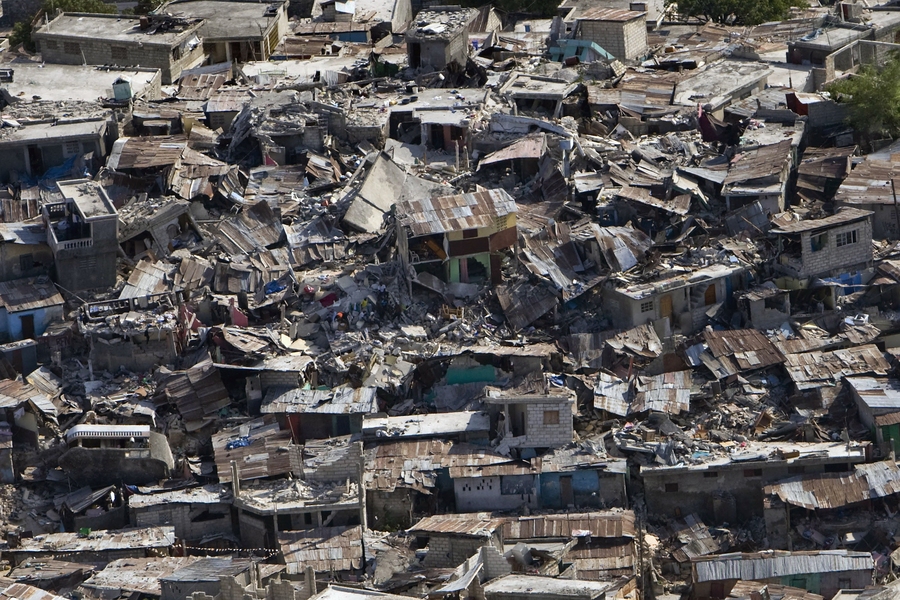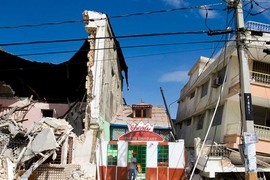Population displacement is a global problem, one that historically has been insufficiently quantified and analyzed, especially given its wide-ranging effects. Displacement can result from a number of factors, including armed conflicts, natural disasters, medium- and large-scale development projects, resource extraction, and even neighborhood gentrification. And it happens all over the world, even here in the United States.
"Recent studies have shown that evictions and displacement are among the leading causes of poverty in the U.S.,” says Balakrishnan Rajagopal, founding director of the Displacement Research and Action Network (DRAN) and the Program in Human Rights and Justice at MIT. He is also a professor of law and development at the Department of Urban Studies and Planning (DUSP). Under Rajagopal’s direction, DRAN currently focuses its efforts on eight countries: Brazil, Cambodia, Colombia, India, Nigeria, South Africa, Turkey, and the U.S.
The consequences of displacement are many. According to Rajagopal, “Displacement affects vulnerable groups like children, for whom their schooling is interrupted. Health is also a major issue as displaced people lose access to support networks while suffering from negative impacts on their physical and mental health due to displacement.”
Currently, in Pakistan, the army’s battles against the Taliban have caused the displacement of many people, who are finding themselves on the fringes of Pakistani cities. Interestingly enough, over half of all displaced people in the world are living in urban areas, says Rajagopal. “City infrastructures can’t handle such a massive influx of people. Services, sanitation, and housing are inadequate. It represents a huge challenge for urban planners.” To study this problem and recommend ways of bridging urban planners, humanitarians, human rights, and development communities, DRAN is collaborating with the world’s leading international organization on displacement, the Swiss-based Internal Displacement Monitoring Centre (IDMC).
Displacement in Delhi
One of the reasons why DRAN was established in 2012 was to develop ways to better measure the size and scope of the problem, and come up with solutions that can have a positive impact on the lives of displaced people and the environments in which they find themselves. As an example, a current DRAN project, which was part of a DUSP practicum course, involved a group comprising Rajagopal; visiting scholar Miloon Kothari, a leading global voice on behalf of human rights; and seven graduate students who spent a month in Delhi, India, studying the causes and impacts of evictions and resettlement, and comparing them with the experience of resettlement in Chennai, another major metro area.
“We developed a series of mapping and visualization exercises in collaboration with — and in support of — local NGOs and academic groups who are trying to prevent and respond to these evictions and displacements,” says Rajagopal. “In order to achieve those goals, it’s essential to chart the displacements and their impact on the morphology of Delhi as a city, and to understand where displaced people end up and what happens to them.”
The team’s work involved integrating diverse sets of data and focused on interpreting the causes and consequences of large-scale displacement and resettlement in Delhi, as well as the institutional and other barriers to making Delhi more responsive to the needs of displaced people. Miloon Kothari and student members of the team will return to Delhi in January 2015 to continue to work with local NGOs and Delhi Government’s Urban Shelter Authority, in order to implement the strategies developed during the practicum.
“The problem is so large that a single actor cannot do it all,” says Rajagopal. “That’s why we partner with other groups and organizations on the front lines of displacement, including leading UN agencies and civil society groups.”
Governments are part of the cause — and, hopefully, the solution
One of the challenges in studying displacement is that there are different internationally recognized categories of displacement, and certain responses are possible for some cases but not for others. Furthermore, governments aren’t always careful about keeping data on displaced people within their borders.
According to Rajagopal, “If, due to conflict, people in Syria leave the country and go to Jordan, they are considered refugees and are entitled to humanitarian aid from global agencies. But if they are forced to leave their homes yet remain within Syria’s borders, they are considered merely to be internally displaced and the response therefore is more limited.”
Even without being engaged in a conflict, governments often cause displacement of their own citizens — typically due to development projects — without ample regard for the consequences. Development results in much larger numbers of displaced people — by orders of magnitude — compared with conflict or disasters, according to Rajagopal. It is also one of the least understood and studied causes, and has received much less attention. Rajagopal notes that in Brazil, for example, the Belo Monte dam project and preparations for the 2016 Olympics are threatening displacement of many thousands of people. He believes that governments need to be more proactive about dealing with displacement, regardless of the cause, and be more accountable.
“Too many governments aren’t paying attention to the human impacts on their development activities,” Rajagopal says. “At the same time, there are more natural disasters and violent conflicts occurring around the globe, so we’re going to see displacement happening more and more often. As we identify solutions to the problems of displaced populations, we would hope to encourage governments on how to incorporate them into new planning paradigms and practices.”









